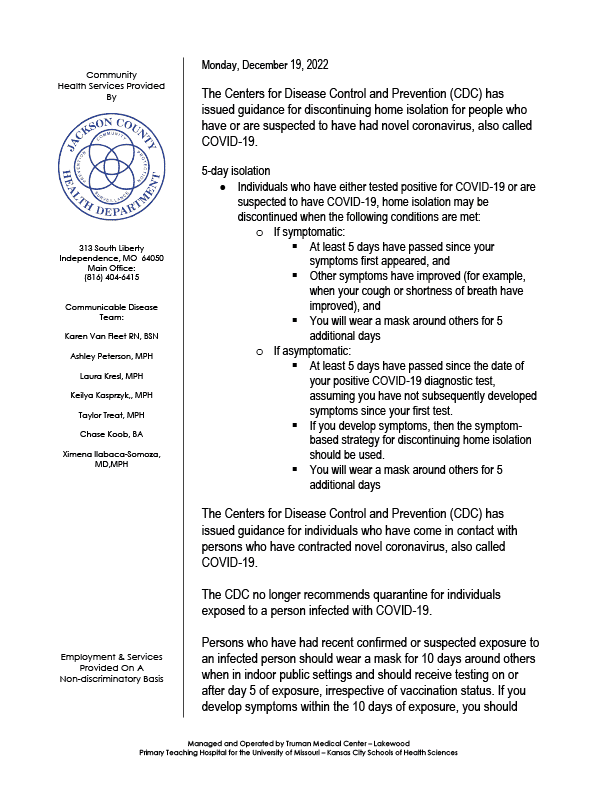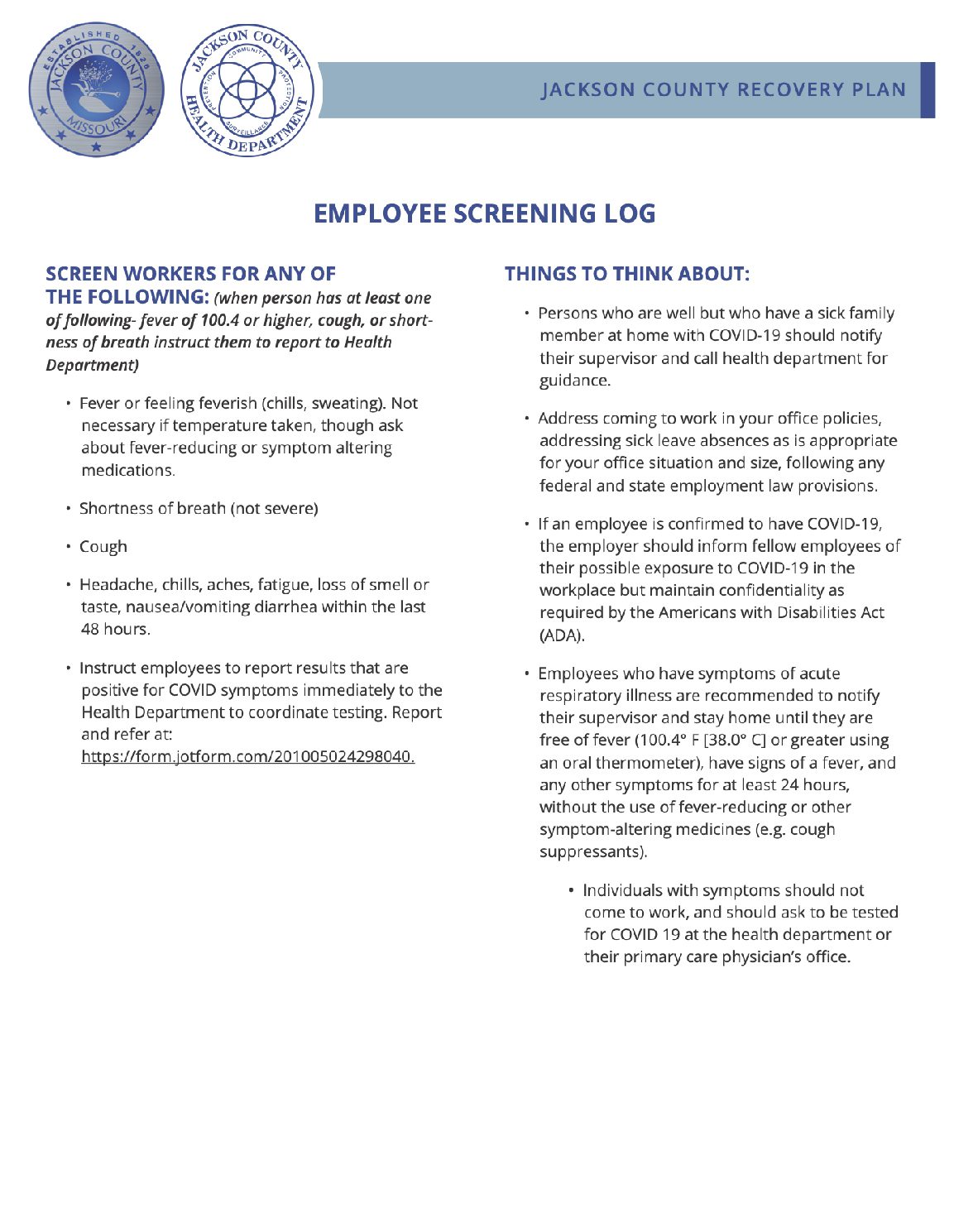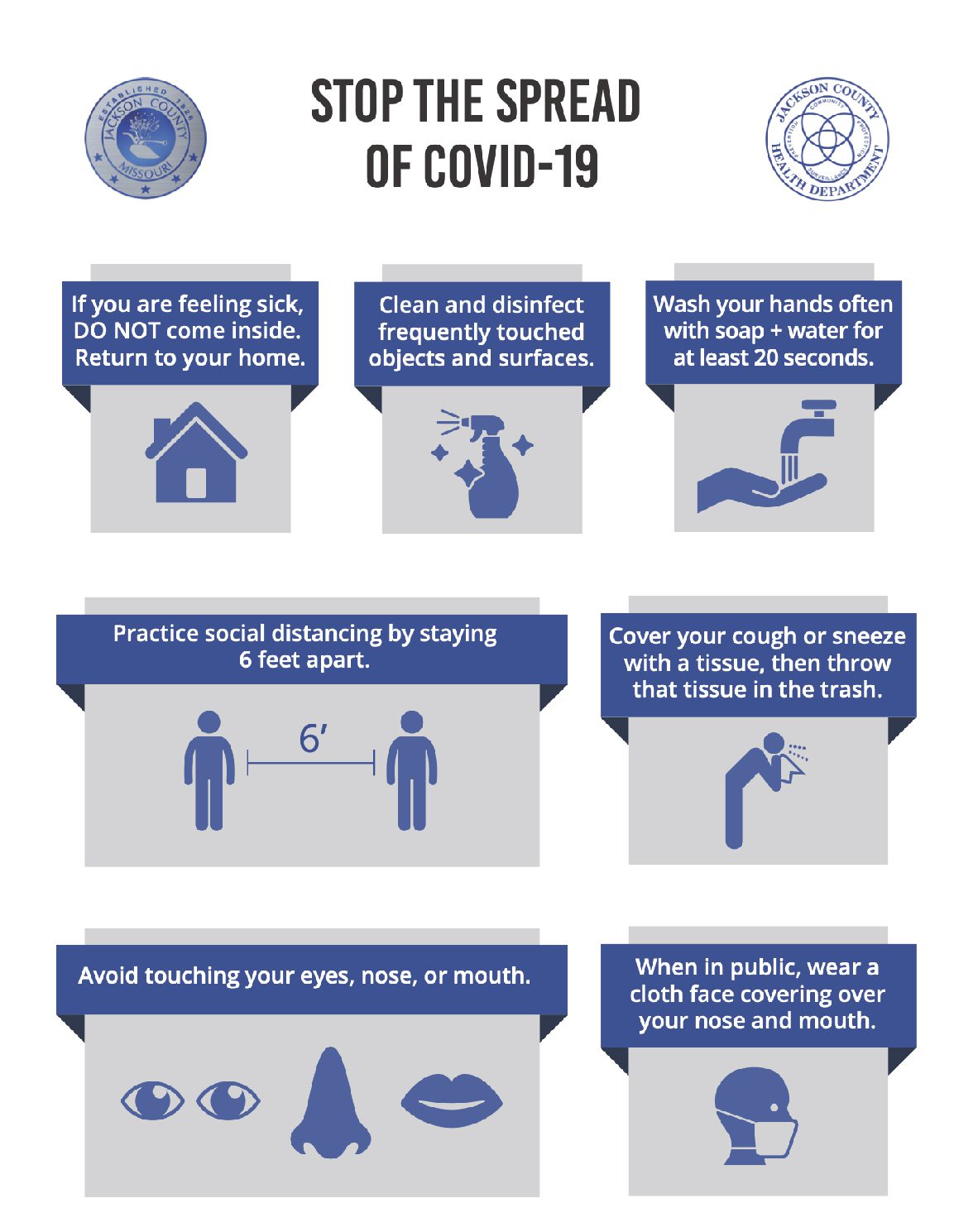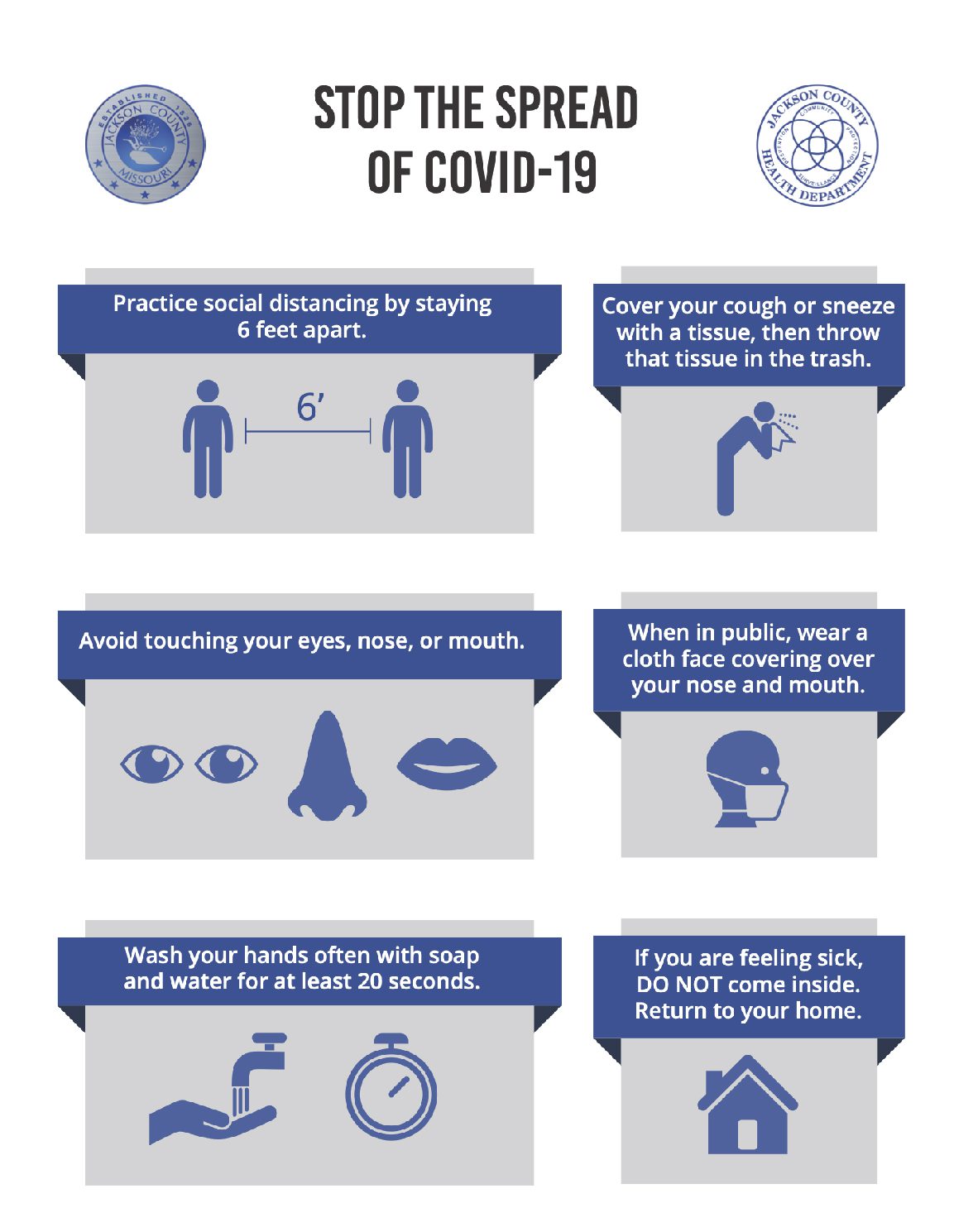Guidance
How to Protect Yourself & Others
Get Vaccinated and stay up to date on your COVID-19 vaccines
COVID-19 vaccines are effective at preventing you from getting sick. They are also highly effective at preventing severe illness, hospitalizations, and death.
Everyone eligible should stay up to date on their COVID-19 vaccines, including people with weakened immune systems.
Wear a mask
It is recommended that everyone 2 and older properly wear a well-fitting mask in public indoor spaces when the COVID-19 Community Level is high, regardless of vaccination status.
The CDC recommends that people continue to wear masks on planes, buses, trains, and other forms of public transportation traveling into, within, or out of the United States and while indoors at U.S. transportation hubs such as airports and stations.
Avoid poorly ventilated spaces and crowds
If indoors, bring in fresh air by opening windows and doors.
If you are at increased risk of getting very sick from COVID-19, avoid crowded places and indoor spaces that do not have fresh air from the outdoors.

What to Do If You Are Sick
If you have a fever, cough, or other symptoms, you might have COVID-19. Most people have mild illness and are able to recover at home. If you are sick:
- Get tested as soon as possible. Stay away from others until you know your test results.
- If you test positive, stay home for at least 5 days. After day 5, you can stop isolating but should continue to wear a high-quality mask around others and avoid those at-risk until day 11. Let anyone you were recently in close contact with know that they may have been exposed.
- If you test negative, you can stop isolating.
- Regardless of vaccination status, you should isolate from others when you have COVID-19. Click here to read detailed isolation guidance from the CDC.
- Keep an eye on your symptoms. If you have an emergency warning sign (including trouble breathing), call 911.
Click the button below to read more on what to do if you are sick.

Isolation and Quarantine Calculator
Recently tested positive or exposed to COVID-19? Check out our isolation and quarantine calculator! It will tell you how long to stay home based on CDC guidance.

Other Resources
Businesses and Employers
The Centers for Disease Control and Prevention (CDC) has guidance for businesses and employers to help prevent and reduce transmission and maintain healthy operations. Guidance includes ventilation in buildings, cleaning/disinfecting your facility, contact tracing, mask considerations, and more!
Jackson County COVID-19 Recovery Support
for Employers and Other Organizations
Employers and other organizations in our community care about the safety of their employees, volunteers, customers, and congregations. In order to protect safety, employers are asked to use the resources listed below. Employers should take the following steps: identity a COVID-19 Organization Contact, maintain an Employee Screening Log, and print and post Safety Signage.
Congregate Care Settings
Older adults living in congregate settings are at higher risk of being affected by respiratory illnesses, such as COVID-19. The Centers for Disease Control and Prevention (CDC) has infection control and testing guidance for nursing homes and long-term care facilities.

Schools
The Centers for Disease Control and Prevention’s (CDC) operational guidance can help K-12 school and ECE program administrators support safe, in-person learning for K-12 schools, and keep ECE programs open, while managing the spread of COVID-19. Based on the COVID-19 Community Levels, this guidance provides flexibility so schools and ECE programs can adapt to changing local situations, including periods of increased community health impacts from COVID-19.
The updated K-12 schools and early care and education (ECE) guidance includes recommendations for prevention strategies for everyday operations as well as COVID-19 specific prevention strategies to add based on the COVID-19 Community Level or when experiencing an outbreak in the school or ECE program. The updated guidance also includes considerations to inform decisions about when to add or remove prevention strategies, and which ones to prioritize.

Child Care Programs
The Centers for Disease Control and Prevention’s (CDC) operational guidance can help K-12 school and ECE program administrators support safe, in-person learning for K-12 schools, and keep ECE programs open, while managing the spread of COVID-19. Based on the COVID-19 Community Levels, this guidance provides flexibility so schools and ECE programs can adapt to changing local situations, including periods of increased community health impacts from COVID-19.
The updated K-12 schools and early care and education (ECE) guidance includes recommendations for prevention strategies for everyday operations as well as COVID-19 specific prevention strategies to add based on the COVID-19 Community Level or when experiencing an outbreak in the school or ECE program. The updated guidance also includes considerations to inform decisions about when to add or remove prevention strategies, and which ones to prioritize.

Guidance
Residents
How to Protect Yourself & Others
Get Vaccinated and stay up to date on your COVID-19 vaccines
COVID-19 vaccines are effective at preventing you from getting sick. They are also highly effective at preventing severe illness, hospitalizations, and death.
Everyone eligible should stay up to date on their COVID-19 vaccines, including people with weakened immune systems.
Wear a mask
It is recommended that everyone 2 and older properly wear a well-fitting mask in public indoor spaces when the COVID-19 Community Level is high, regardless of vaccination status.
The CDC recommends that people continue to wear masks on planes, buses, trains, and other forms of public transportation traveling into, within, or out of the United States and while indoors at U.S. transportation hubs such as airports and stations.
Avoid poorly ventilated spaces and crowds
If indoors, bring in fresh air by opening windows and doors.
If you are at increased risk of getting very sick from COVID-19, avoid crowded places and indoor spaces that do not have fresh air from the outdoors.

What to Do If You Are Sick
If you have a fever, cough, or other symptoms, you might have COVID-19. Most people have mild illness and are able to recover at home. If you are sick:
- Get tested as soon as possible. Stay away from others until you know your test results.
- If you test positive, stay home for at least 5 days. After day 5, you can stop isolating but should continue to wear a high-quality mask around others and avoid those at-risk until day 11. Let anyone you were recently in close contact with know that they may have been exposed.
- If you test negative, you can stop isolating.
- Regardless of vaccination status, you should isolate from others when you have COVID-19. Click here to read detailed isolation guidance from the CDC.
- Keep an eye on your symptoms. If you have an emergency warning sign (including trouble breathing), call 911.
Click the button below to read more on what to do if you are sick.

Isolation and Quarantine Calculator
Recently tested positive or exposed to COVID-19? Check out our isolation and quarantine calculator! It will tell you how long to stay home based on CDC guidance.

Other Resources
Businesses and Employers
The Centers for Disease Control and Prevention (CDC) has guidance for businesses and employers to help prevent and reduce transmission and maintain healthy operations. Guidance includes ventilation in buildings, cleaning/disinfecting your facility, contact tracing, mask considerations, and more!
Jackson County COVID-19 Recovery Support
for Employers and Other Organizations
Employers and other organizations in our community care about the safety of their employees, volunteers, customers, and congregations. In order to protect safety, employers are asked to use the resources listed below. Employers should take the following steps: identity a COVID-19 Organization Contact, maintain an Employee Screening Log, and print and post Safety Signage.
Congregate Care Settings
Older adults living in congregate settings are at higher risk of being affected by respiratory illnesses, such as COVID-19. The Centers for Disease Control and Prevention (CDC) has infection control and testing guidance for nursing homes and long-term care facilities.

Schools
The Centers for Disease Control and Prevention’s (CDC) operational guidance can help K-12 school and ECE program administrators support safe, in-person learning for K-12 schools, and keep ECE programs open, while managing the spread of COVID-19. Based on the COVID-19 Community Levels, this guidance provides flexibility so schools and ECE programs can adapt to changing local situations, including periods of increased community health impacts from COVID-19.
The updated K-12 schools and early care and education (ECE) guidance includes recommendations for prevention strategies for everyday operations as well as COVID-19 specific prevention strategies to add based on the COVID-19 Community Level or when experiencing an outbreak in the school or ECE program. The updated guidance also includes considerations to inform decisions about when to add or remove prevention strategies, and which ones to prioritize.

Child Care Programs
The Centers for Disease Control and Prevention’s (CDC) operational guidance can help K-12 school and ECE program administrators support safe, in-person learning for K-12 schools, and keep ECE programs open, while managing the spread of COVID-19. Based on the COVID-19 Community Levels, this guidance provides flexibility so schools and ECE programs can adapt to changing local situations, including periods of increased community health impacts from COVID-19.
The updated K-12 schools and early care and education (ECE) guidance includes recommendations for prevention strategies for everyday operations as well as COVID-19 specific prevention strategies to add based on the COVID-19 Community Level or when experiencing an outbreak in the school or ECE program. The updated guidance also includes considerations to inform decisions about when to add or remove prevention strategies, and which ones to prioritize.






